Roses & Apricot Jam
Sunday, April 30, 2006
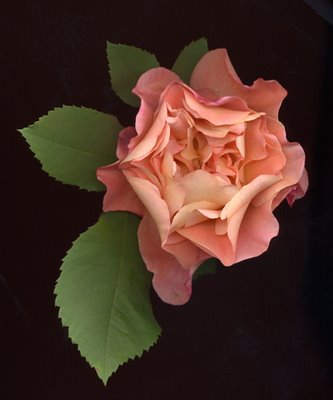
The naming of a rose can be the key to its success. I don't particularly like the ones that are named after contemporary and famous women. I would rather have the ones that are the namesakes of now obscure women. Who would Mme Pierre Oger be? I don't know, and I have a fondness for this sport of the more famous Bourbon rose, Reine Victoria. The only famous woman rose I own is Rosa 'Jaqueline du Pré'. It is as popular in my garden as 'Dainty Bess' and 'Fair Bianca'. Some rose names don't inspire. In the beginning I never cared much for a modern shrub rose, Rosa 'Westerland', which is a German rose hybridized by Kordes. I couldn't have it in my garden as it is orange in colour and my wife Rosemary does not like orange in the garden. But consider that this rose is extremely fragrant and its scent resembles (for me) that of apricot jam. So I bought it and planted it on our lane garden (not technically the garden). Rosemary has been won over and she, too, would not part with our Rosa 'Westerland'.
Rebecca at Nitobe
Saturday, April 29, 2006
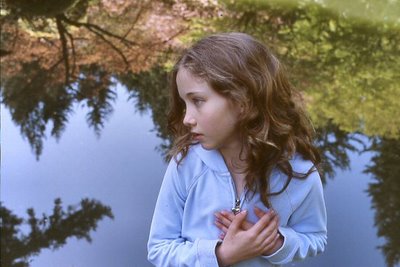
Last Saturday Rosemary and I took Rebecca and Lauren to the Nitobe Memorial Garden at the University of British Columbia. Lauren is still at that stage where she is uncooperative for photos or she will more likely make a face. So Rebecca is still my usual subject. They ran around and Rebecca climbed as many trees as she could. I cannot believe we were not ejected. Tomorrow Rebecca and I will line up at VanDusen at 8am for the 10am opening of the annual VanDusen plant sale. I have promised Rebecca a rose bush.
Fleetwoods, Guy & The Marble Arch
Friday, April 28, 2006
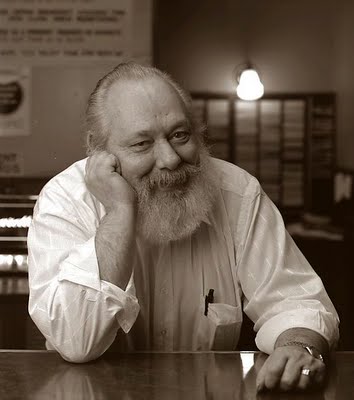
At half-past six the Fleetwood purred up to the front door and I had it open when she came up the steps. She was hatless. She wore a flesh-coloured coat with the collar turned up against her platinum hair. She stood in the middle of the living-room and looked around casually. Then she slipped the coat off with a lithe movement and threw it on the davenport and sat down. 'I didn't really think you'd come,'I said. 'No. Your're the shy type. YOu knew darned well I'd come. Scotch and soda, if you have it.' 'I have it.' I brought the drinks and sat down beside her, but not close enough for it to mean anything. We touched glasses and drank. 'Would you care to go to Romanoffo for dinner?' 'And then what?' 'Where do you live?''West Los Angeles. A house on a quiet old street. It happens to belong to me. I asked you and then what, remember?' 'That would be up to you, naturally.''I thought you were a tough guy. You mean I don't have to pay for my dinner?' 'I ought to slap your face for that crack.' She laughed suddenlly and stared at me over the edge of her glass.'Consider it slapped. We had each other a bit wrong. Romanoffs could wait a while, couldn't it?''We could try West Los Angels first.' 'Why not here?' 'I guess this will make you walk out on me. I had a dream here once, a year and a half ago. There is still a shredd of it left. I'd like to stay in charge.' She stood up quickly and grabbed her coat. I managed to help her on with it. 'I'm sorry, 'I said, "I should have told you that before. She swung around with her face close to mine, but I didn't touch her. 'Sorry that you had and dream and kept it alive? I've had dreams too, but mine died. I didn't have the courage to keep them alive.''It's not quite like that. There was a woman. She was rich. She thought she wanted to marry me. It wouldn't have worked. I'll probably never see her again. But I remember.' 'Let's go. 'she said quietly. 'And let's leave the memory in charge. I only wish I had one worth remembering.'On the way down to the Cadillac I didn't touch her either. She drove beautifully. When a woman is a really good driver she is just about perfect.
Playback, Chapter XIII, by Raymond Chandler
I felt like part of a Raymond Chandler novel once when I went to the front desk of the Marble Arch Hotel and Guy (above), the man behind it, told me, "Alex, the young lady is waiting for you upstairs. You will not need a key." I had been attempting to do my own Helmut Newtons. Twice difficult, since not only am I not Newton, but I also don't have access to expensive Paris hotels. The Marble Arch worked out just fine.
In Praise Of A Gastropod's Good Taste
Thursday, April 27, 2006
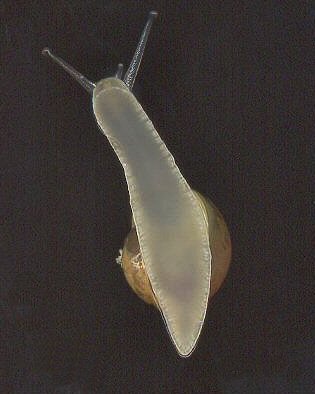
When Aristoteles came up with the "unmovable mover" as a proof for the existence of God I would say he had probably not had a gastropod infestation in his Helenic garden. For me the snail and the slug (and the cutworm) are my proof to the contrary. Or at least that Noah was much too patient. I have always considered my taste for garden plants to be impeccable. The fact that slugs and snails love my hostas and ligularias, suggests that perhaps the devil himself has impecable taste. My mother would go into our Buenos Aires garden in the evening with a candle and scissors to control the slug population. garden. She got too close to a palm tree with her candle and the flames leapt up to the top in seconds. By the time the firemen arrived the fire was out. And the palm tree survived to see many summers more. Not too long ago my Rebecca came in with this ....in hand and said, "Papi, scan it." Unlike my mother I did not use scissors. My shoe sufficed.
Jane Jacobs & Viveca Lindfors
Wednesday, April 26, 2006
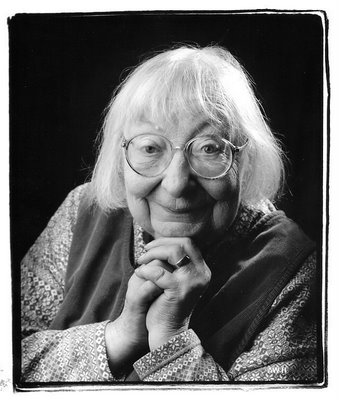
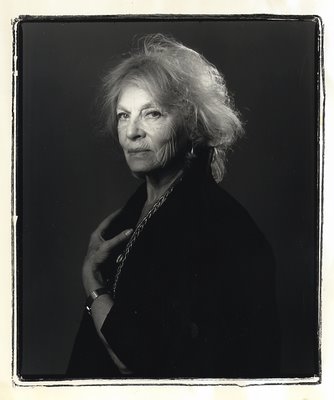
A few months back I received a request from an under 30 female lawyer I had photographed. She wanted to know if I could "fix up" the "marks" under her eyes. Fortunately for her I had taken a course in Photoshop CS and I knew all about the Patch Tool. Her marks were history in seconds.
In 1992 I got to photograph Swedish actress Viveca Lindfors (right). She was thrilled to know that I had seen her in The Adventures of Don Juan with Errol Flynn and that I remembered her. The movie had been released in 1948 and I had seen it as a boy in 1951 at the General Paz on Cabildo in Buenos Aires. We walked together to my nearby studio from the Hotel Vancouver where she had been interviewed by John Lekich. She faced my camera and said, "Make sure every detail of my face shows. I am very proud of it." In November 1995 I received a call from writer Sean Rossiter who told me, "Jane Jacobs (above) is in town. I strongly recommend you take her picture. Let me arrange this for you, if you are interested." The softspoken urbanologist knocked on my door and stepped in. She stood where Viveca Lindfors had stood and told me, "Don't try to soften up my face, this is who I am."
Viveca Lindfors died in October 1995 and Jane Jacobs died yesterday, April 25.
The Adventures of Don Juan
Jane Jacobs
Russell's Father
Tuesday, April 25, 2006
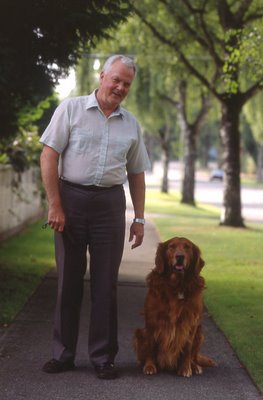
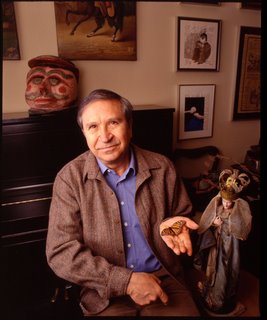
We moved into our present house in 1986 and we immediately noticed the regulars. One of them was this kindly gentleman we always called Russell's father as that was his dog's name. He would walk on our boulevard on the way to the park with Russell every day around 5 in the summer and earlier in winter. Russell's father always carried the leash in his hand but I never saw him attach it to his dog. In 1996 Russell died and soon after his master moved out of his house on Cartier Street. A few years later Rosemary spotted his picture in the Vancouver Sun's obituary and she said, "Look Russell's father died." When I mow the lawn on the boulevard I often think of Russell's father. What comes to mind is Mexican poet, Homero Aridjis's (right) words:
"Invisible ancestors
walk with us
through the back streets
car-noises
the stares of children
young girls's bodies
cross through them
Weightless and vague
we travel through them
at doorways that no longer are
on bridges that are empty
with the sun on our faces
we too
move toward transparency." Homero Aridjis - Letter From Mexico
Flushing Roses
Monday, April 24, 2006
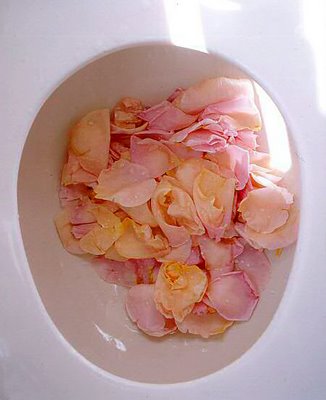
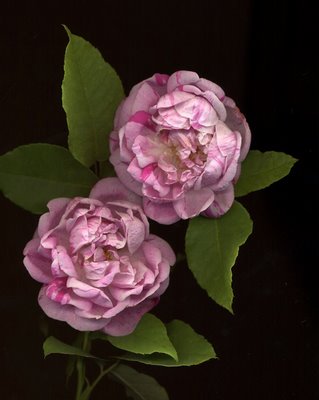
Sunday was a work in the garden day and my roses are leafing out and already giving me the promise of blooms to come. Roses are very much like babies and cats. They don't perform on demand. So I prune them; fertilize them; spray them with copper (which I believe is allowable) to prevent some black spot and then I just hope. Few of my roses get black spot as I have chosen varieties that are resistant. Ferdinand Pichard (above, right) and Reine Victoria get the spot no matter what I do. But I will not trash them since they are too beautiful and fragrant. In May and June, when most of my roses really perform, I invite friends for tea. When they go to the guest bathroom I always wait for that slight opening of the door and the question, "Can I flush this?"
Vancouver Rose Society
The Crouching John MacLachlan Gray
Sunday, April 23, 2006
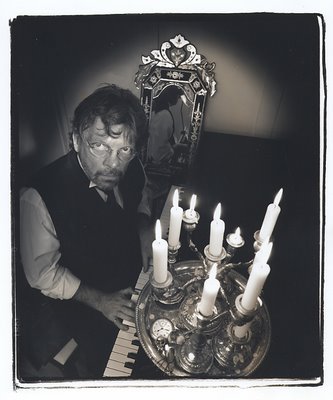
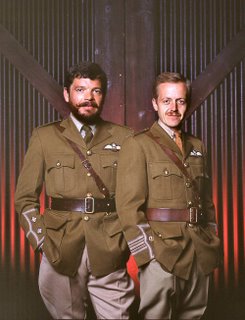
I know him as John Gray even though most know him as John MacLachlan Gray, newspaper columnist and purveyor of gritty Victorian era novels set in London. Last Friday he sat on the other side of the table at dinner at the Opus Hotel and I was reminded how he was instrumental in helping me achieve some sort of longevity in a profession (photography) that is more fleeting than permanent. I first met him in August 1982 on the set of Billy Bishop Goes to War at the Vancouver Playhouse. I photographed him and Eric Peterson in front of a corrugated wall that was supposed to evoke a WW-I fighter plane hangar. Through the years I followed his career as a musician, composer, entertainer (with a piano he is dinamite). He has been a columnist on several local and national newpspapers and made wonderful and caustic skits for CBC's The Journal. Then he kind of disappeared and suddenly I started reading about a John MacLachlan Gray who was a novelist. The Georgia Straight asked me to photograph him at his home in April 2003.
Back then (the fax era before the email era) when we all seemed to have more time I used to call John at home and we would talk. I once cried the blues to him on how my photographic career was languishing and nobody called me anymore. "Alex, he said, "disappear for a while. Crouch, is what I call it. Then come back with something completely different." Crouching has served me well and I hope John lives long and that I am around to see what he is up to after his next crouch. Meanwhile I am going to open his novel White Stone Day and enjoy myself.
John MacLachlan Gray
Lauren, Rebecca And An Exquisite Routine
Saturday, April 22, 2006
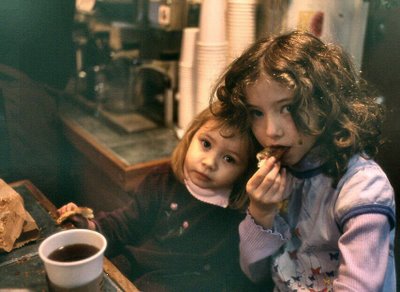
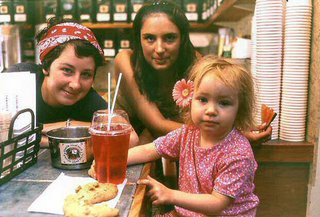
Routine and boredom are not the same thing. For two years my Saturday routine has been a most exciting part of my week and also paradoxically it gives me a sense of peace and refuge from worry and stress. At 9:45 (when our granddaugthers do not sleep over at our house) I pick up, Rebecca (8½) and Lauren (3½) and drive to Granville Island. At that time it is easy to park. I deposit Rebecca at her ballet class at the Arts Umbrella and walk leisurely to the Granville Island Market. I buy a plain croissant (or sometimes she wants a Smarties cookie) for Lauren and we then sit down at the Granville Island Tea Company for exactly one hour. I try different black teas while Lauren eats the inside of her croissant. I then dunk the crust she does not like in my tea. The young ladies who work at the Tea Company, all talk to Lauren. They are amazed that she will sit for that length of time. The regulars all come and I know what kind of tea they are going to ask for. Lauren and I love this routine. She happily repeats the words of Spanish I expose her to. Every once in a while there are no ballet classes but Rebecca and Lauren and I still go to the island. It is on those occasions that I can manage to photograph them together. For the task I use a Nikon FM-2 loaded with Ektachrome 100G. The exposure is always around 1/30 with a 35mm lens wide open at F-2.
Nick Muni, Faust & Juan Manuel Sánchez
Friday, April 21, 2006
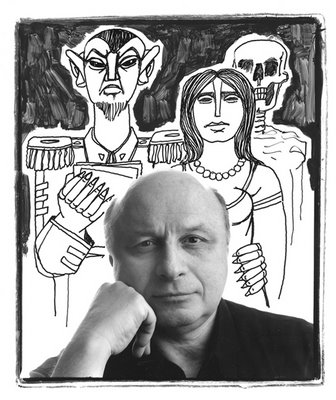
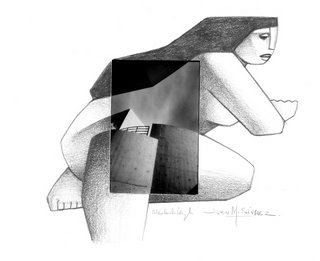
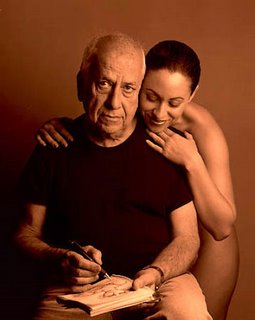
Imagine that Jack Shadbolt were alive and living in Argentina. Imagine calling him up and telling him you were assigned to photograph an American director involved in an opera production of Gounod's Faust. Imagine the thrill of having him collaborate in a photo illustration. I have had that thrill because Juan Manuel Sánchez, 74, is an Argentine painter living in Vancouver of Shadbolt's equivalent caliber. He speaks no English, so he feels a bit isolated. He sometimes tells me, "I am a penguin in Canada. That is about as lonely as a polar bear in Argentina." When the Straight asked me, with very short notice, to photograph Nick Muni, who is directing the Vancouver Opera's production of Faust, I knew that only a colaboración (this is what Juan and I call our joint works)would save me. I gave Juan three 8x10 prints of Nick Muni in case he made a mistake. Overnight Juan worked on one of them and proudly returned the other two, unused. If you look closely, you will notice that Mephistopheles has military epaulets much like an Argentine general. I had one hell of a time convincing Juan to keep clothes on Marguerite. "If you don't," I told Juan, "our collaborative career at the Straight will be shortlived."
Nick Muni
Juan Manuel Sánchez
Vancouver Opera's Faust
Bob Bose And The Grand Coulee Dam
Thursday, April 20, 2006

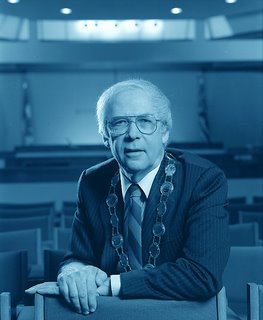
I always wanted to be an engineer until I stumbled over the difference between capacitance and inductance. But I have not lost my interest in engineering. One of my favourite authors is Henry Petroski, whose book To Engineer is Human - The Role of Failure in Successful Design led me to read anything he publishes. Another fave of mine is L. Sprague de Camp's The Ancient Engineers. It was in this book that I found out that Sennacherib (705-681 BC), the Assyrian engineer/king, set up the first no parking signs (for chariots) in Nineveh. They read: Royal Road. Let No Man Lesten It.
In the mid 30s an organization called Technocracy started in the US with the idea that engineers in governing position would make the world a better one. The folks at General Electric used to advertise, Progress is our most important product. Somewhere along the line these engineers became linked with fascism and its obsession with order. The only thing good that people ever said about Mussolini is that the trains ran on time. Later on, Alcoa, General Electric and General Motors all somehow failed to make our world a better one.
But I still had hope, and in particular in 1988, when I photographed Bob Bose for his campaign (with backing from the NDP) for mayor of Surrey, BC. He was a pragmatic and intelligent man who happened to be a chemical engineer. He was also skilled in the use of a 4x5 inch camera. When I photographed him, with his chain of office, in the Surrey City Hall I was hoping that the much vaunted order of the engineer would produce results. He was against the mall development of Surrey and that cost him his job in the end.
In 2002 I had to go to Spokane, Washington to a hosta convention. When I realized that the Grand Coulee dam was not too far out of the way I made a detour. The whole site made me think of the excitement of a past era that believed in engineering and the wonders of harnessing nature's power.
To Engineer is Human
Bob Bose
Stravinsky, Parsifal, Beethoven, Rodney Graham & Robert Silverman
Wednesday, April 19, 2006
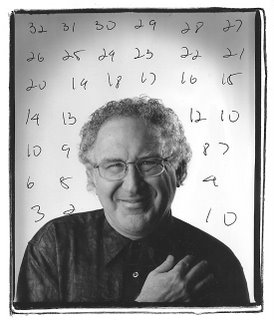
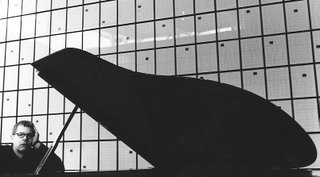
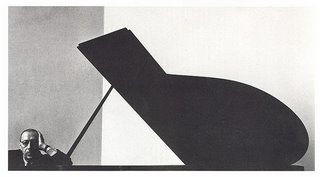
Photographic assignments involving musicians are always a challenge. How can one be original if it has all been done before? And most difficult of all is a pianist. This is particularly true if one has memory of Arnold Newman's difinitive portrait. When the Globe & Mail asked me to photograph Canadian conceptual artist, Rodney Graham's show Recital at the Morris and Helen Belkin Gallery at UBC I was momentarily stymied. A pre-programmed grand piano was part of the show. By converting Wagner's score for Parsifal into mathematical formulas Graham had conceeived a piece of music that began in 1882- the premiere of the Wagner opera - and which will come to an end in 39 billion years. The programed piano would play one note every ten or twenty minutes (the pattern of notes can be seen in the wall behind Graham and piano (above, left). Since Rodney Graham and I have shared the same floor, where we have separate studios for some 12 years, I know that he is not as scary and serious as he looks. His Parsifal project had something of a tongue in cheek in it. I decided to rip off Arnold Newman. The folks at the Globe & Mail respected my request to keep my crop so as to make the photo look more like Newman's. In October 2000 I had to photograph for the Georgia Straight solo pianist Robert Silverman who had just recorded all of Beethoven's 32 piano sonatas. When I arrived at Silverman's UBC office I knew what I was going to do.
Parsifal
Robert Silverman
Tinkering With A BRM P261 V8
Tuesday, April 18, 2006
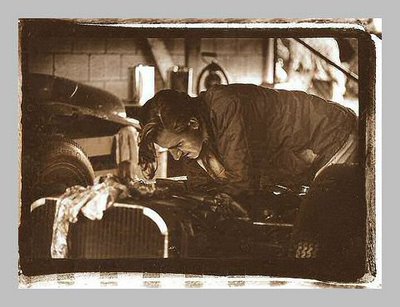
This is British Formula 1 driver Graham Hill tinkering with his BRM P261 V8 during the trials for the 1964 Mexican Gran Prix. On one of the days I positioned myself at a difficult curve. I noticed a tar spot on it. Every time Graham Hill took the curve, his car was always at the same distance from the spot, which was unlike the other drivers who seemed to have less precision. For more:
The Tyee
Slipping clutch
The Royal Hudson And The Killer Whale
Monday, April 17, 2006
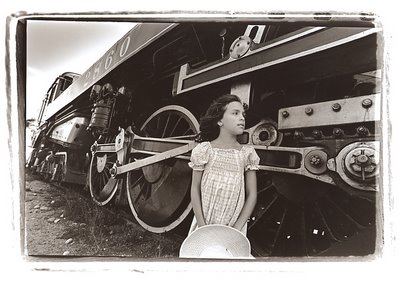
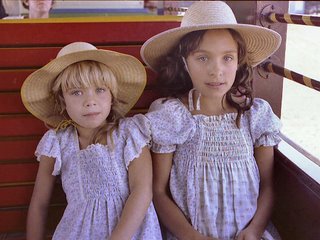
In December 1981, on contract with CP Rail, I was dispatched to photograph the Royal Hudson. She was being repaired the CPR's Drake Street yard (where the refurbished Roundhouse on Pacific Avenue is now). 2860, the Royal Hudson's Montreal Locomotive Works serial number, is how she is affectionately called. She lay in the repair bay on a shorth length track, only slightly longer than her 90-foot, 10 inches length. She reminded me of the first locomotive I ever saw, in the late 40s. It also had the 4-6-4 wheel arrangement. Six large wheels were powered and the eight smaller ones were used for steering and stability, But that one was only five feet long and inside a glass display case at the entrance of Retiro, the cavernous Vitorian style train station in Buenos Aires. My father had put a coin in a slot and the locomotive's wheels turned. I was most impressed by the glow of fire under the tracks.
While 2860 had been making the round trip from North Vancouver to Squamish since 1974, she had taken a different route to Drake Street. From the North Vancouver BC Rail yard she had crossed the CN Railway bridge at Second Narrows and steamed through the Thornton tunnel under Capitol Hill to the CPR/CNR interchange at Sapperton. She then headed to Port Coquitlam and then back on the CPR's tracks to Gastown. She went through the Dunsmuir tunnel and under the Connaught bridge (the old Cambie Street bridge) to Drake.
In 1979 I took my family on the Royal Hudson excursion to Squamish. Both my daughters came in long dreses and I photographed them (Hilary,7, left and Ale, 11, right)in the last rail car. It had colourful wooden seats. When 2860 changed tracks in Squamish to turn around, Frank Smith, the engineer, told us 2860's H1-e class engine generated 4500 horsepower at 60 mph.
Since 2550 and 2851, both earlier H1-d class Hudsons pulled King George VI and Queen Elizabeth across Canada in 1939, the whole class of locomotives from 2850 to 2864 was designated Royal. Only 2860 was still running until a yearly inspection in December 1999 indicated her fire box had to be replaced. It will take between $1 million to 2 million to get her in shape. I have not yet heard if she will ever fire her boiler again.
Rebecca, Hilary's daughter took the excursion with another older train, the 3716. This brings to mind that Hilary, Ale and Rebecca were all splashed (in different years) by a killer whale while sitting too close to the glass barrier at the Vancouver Aquarium. Will Rebecca's sister, Lauren, 3½, ever experience either pleasure?
Royal Hudson
Sunday, April 16, 2006

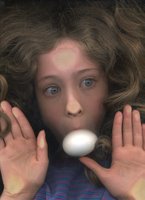
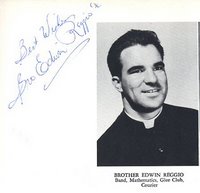
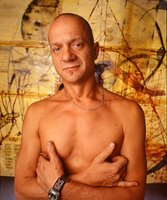
In my old Catholic missal I remember distinctly that every Sunday mass and feast day had a category of importance or ranking. The most important Sunday and or feast day of the year is not Christmas but Easter. Brother Edwin Reggio, my religion teacher at St. Edward's High School in Austin, Texas explained why. If after the crucifixion, Jesus did not rise from the dead, then everything He preached was a lie. The other and now almost forgotten, but very important feast, is January 6th's Epiphany. Until the advent of the New Testament only circumcised Jews (the chosen people who had made a compact with God) could be saved. The three wise kings represented the gentiles (uncircumcised heathens!) who now could be part of the fold. One day, trying to waste time in class, we asked Brother Edwin why it was that Easter had a bunny. Since we were in Texas we understood his explanation that the hare or rabbit at night will pop up here and then disappear and pop up somewhere else. This was very much the case of Jesus after Easter. He would appear here and there but not long enough for "doubting" St Thomas to believe as true.
Today I photographed a group of Vancouver artists including Attila Richard Lukacs who asked Rebecca if she looked forward to the coming of the Easter Bunny. Rebecca (8½) replied, "The Easter Bunny does not exist."
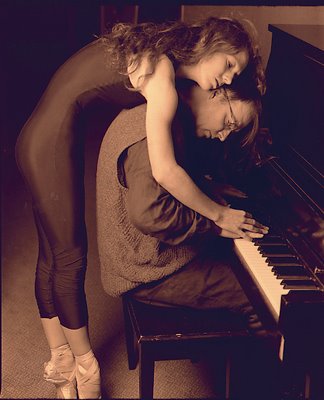
Holy Saturday is called sábado de gloria in Spanish. I have never known why this day, in which nothing really happens is called a Saturday of glory. It seems like today is a day of transition in which me meditate on a death without knowing for certain if a resurrection will follow.
When I asked Lauri Stallings to hover near composer Owen Underhill in 1997 in preparation for Ballet BC's production of Boy Wonder I felt great comfort and peace.


My first job in Vancouver, 30 years ago, was at Tilden Rent-A-Car on Alberni Street, across from the Ritz Hotel (If you have to ask, you are too young). I was told not to rent cars to anybody surnamed John or George. I did not understand. Finally the manager said, "Don't rent to Indians." I decided to rent a car, no questions asked, to the first "Indian" that walked through the door. That Indian was a very large and rough looking man called Moving Rock. I rented him (he did not have a driver's license) an Oldsmobile station wagon. For reference Moving Rock gave me Alderman Harry Rankin. Most of us were in awe of Rankin. I called and Rankin told me I was not going to have any problems with Moving Rock. A month later the abandoned station wagon was found in Arizona. I was almost fired. Furthermore I was not to rent to any more rocks, Indians or a Johnny Stone. Stone, who was a good renter of mine, was a black pimp from Seattle. He rented modest Vegas and always returned them spotless and on time.
In September 1987 Alderman Rankin was running for mayor against Gordon Campbell. Equity Magazine's editor, Harvey Southam thought Campbell the better man to keep the status quo so he hired right-wing columnist and writer Doug Collins to write a profile. I was dispatched with the instructions to use my green filter, b+w technique on Rankin. I told Rankin that the green filter was going to make him look older. His retort, "Go ahead shoot, I don't give a f...." When the magazine appeared in October I was amazed to see my two page spread with the huge banner, Quietly Communist on top.
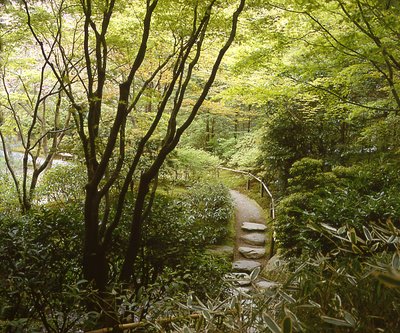
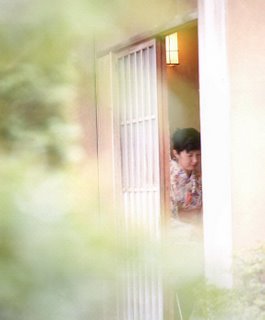
When I first came to Vancouver 30 years ago I had seen perhaps 10 real live Japanese people in my life. They had been my 10 students, from the Japanese company Mitsui, that I had taught Spanish to in Mexico City. I was fascinated by all things Japanese. Japanese is pronounced exactly like Spanish as they have only five vowel sounds. I could proudly read what was on the lenses of my cameras - Asahi Pentax - Nippon Kogaku (the original Nikon lenses had this).
Sometimes you have to be a newcomer or a tourist to a city to discover its treasures. One of Vancouver's is the Nitobe Memorial Garden at UBC. It is part of the UBC Botanical Garden. But let's be exact. That's UBC Botanical Garden and Centre of Plant Research. A real botanical garden does reasearch and exchanges information with other botanical gardens worldwide. VanDusen, for example is display garden as it does not do research. Some years ago Saturday Night assigned me to photograph Nitobe Garden. The author of the piece was/is my friend David Morton. While I considered myself a competent portait photographer I was an innocent with gardens. It took me a while to figure out (only after I peeked at Japanese garden spreads in Japanese camera magazines) that Japanese gardens are best photographed on cloudy days. I learned then what I now try to teach my students at Focal Point. The big enemy of photography is contrast. I would define photography as the control of contrast. To get all those shades of green at Nitobe you need to wait (not long in Vancouver) for a cloudy day. You also try to use film with the least amount of contrast. This is usually professional colour slide film or good old wedding photography colour negative. Digital cameras have to have their contrast levels dialed down.
And why is Nitobe Garden a treasure? The water and those greens are most soothing. The garden is also quiet. One of my favourite games is to pick one of the koy and to follow it around as it meanders in the pond.
Nitobe
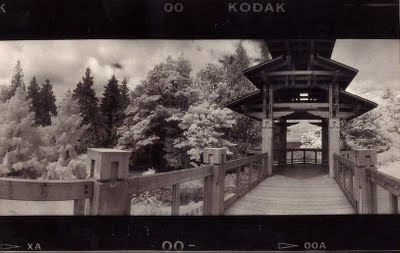
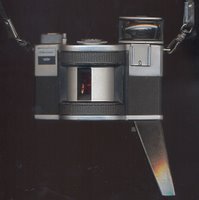
My Horizont swivel lens panoramic camera was made in the Soviet Union in the 60s. It is highly unpredictable and unreliable but it has a sharp lens. The lens swivels a 150 degree sweep which I think mimics human vision (albeit with a sharper peripheral view). When I load it with Kodak b+w infrared film the results are even more unreliable and unpredictable. But when things go well you get this. The curious split toning colour is caused by selenium toner working on the now (alas!) discontinued Agfa Portriga. On a sunny day the view (on the right) at the end of the boardwalk at the UBC Botanical Garden is one of the most beautiful sights I have ever seen.
UBC Botanical Garden
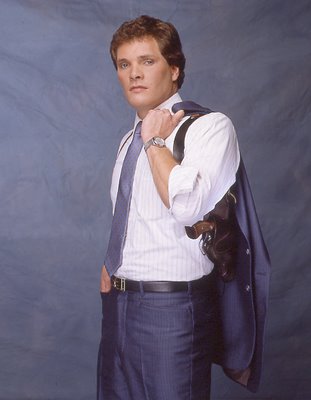
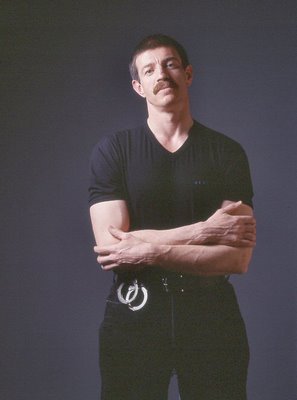
Manrique was a plainclothes cop. My father, who was a journalist for the Buenos Aires Herald, used to bring him to the house. I was so curious in trying to spy the gun he wore under his coat that I never found out if Manrique was his first or last name nor why he visited my father. In one visit Manrique gave me a cheap Thor copy of Edmundo de Amicis's Corazón which I have read many times and still have. I can say I have had a special interest in cops since. In Mexico I was afraid of cops and I bribed many while there. It has been a relief in my 30 years in Vancouver to have never felt that dread I had in Mexico when I was stopped by a cop. One cop, in particular I came to like, lots. I photographed Constable Steven Pranzl (above, right) for the cover of Vancouver Magazine in June 1986. We all laughed at how our makeup artist overdid it and many in the Vancouver Police Department thought Pranzl looked like a queen. At the time he was in sex crimes. Through the years I have kept in touch with this stylish and urbane man. The last time I had some Earl Gray tea with him, he was wearing a camel hair coat from Holt Renfrew, an immaculate black turtle neck, beautiful slacks with a sharp crease and burgundy tassel shoes. "I am in homicide now," and producing a pepper spray can, "and this is my gun."
I met Gil Puder (above,left) in June 1999. We had coffee at the Ovaltine Cafe on West Hastings. I had been hired by Douglas & McIntyre to photograph him for his forthcoming personal expose on the drug situation in Vancouver as seen by a cop on the beat. The book was to be called Crossfire. We decided not to photograph him in a back alley but in my studio. For personal reasons (or reasons he was not willing to reveal to me) he could not pose in a Vancouver Police uniform. He confessed to me that he had an unusual mid life crisis problem. Or at least it was his wife's as she had left him and puchased a Miata at the same time. After taking the photographs, a couple of months later I had to photograph an actor in a back alley who was making a movie. I asked one of the motorcycle cops there if he knew Puder. His exact answer (to the effect that the sooner Puder was dead the better) I cannot print here. A few months later I read of his death in the Vancouver Sun. Perhaps I am a bit paranoid in having noticed that a writer at the publisher told me Puder had died of an ailment that was not the one mentioned in the Sun. Shortly after, I was paid for the photos and the book project was cancelled. The unofficial explanation that I was given was that with the author dead nobody was keen on taking the chance of dealing with a lawsuit by what may have been the explosive content of his book.
Addendum 1. - October 7, 2007
name: Christine Puder
comments: Hi Alex,
I was looking for a photographer and came across your information as
I searched. I am the widow of Gil Puder. I was somewhat dismayed
at the information posted about Gil on your site. Some of the
information is not true and is damaging for myself and my sons. I
would be glad to help it appear accurately if you choose to have it up
for everyone to see. It is personally upsetting as I did not leave Gil, nor buy a sportscar. His death was from melanoma and my sons and I spend all our time
with Gil during his final days at the hospital.
Thank you for your consideration,
Sincerely,
Christine Puder
Addendum 2
I could have not heard correctly what Mr. Puder told me in my studio during the photo session. Or perhaps if I heard correctly, his disease prevented him from expressing himself correctly. I am deeply sorry that I may have offended unknowingly (when I wrote the above) her and her children. But I would never consider either tearing out or correcting a page from my diary. On the other hand Christine Puder was gracious enough not to point out that I had incorreclty spelled her husband's first and last name in my above blog. I have corrected that.


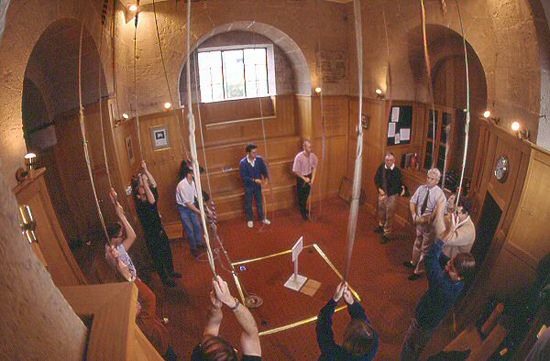
Some years ago while in London, I decided to go and see a Graham Greene play, Travels With My Aunt. At the intermission I was savouring the feeling of not running into anybody I knew or had photographed. That was not to be. The mysterious and handsome Laith Reynolds (I once asked him if he were a spy and he smiled without answering), stood in front of me producing a hand with a spotless white, cotton glove. "I have a skin, condition, you know." He offered to pick me up very early in the morning at my hotel to take me to listen to him change ring at St Martin in the Fields and at St Clement Danes. People go to St Clement Danes to see the statue of Sir Arthur "Bomber" Harris that is outside. That evening Laith drove me (he owns a Jaguar in every city that he lives in) to his house for a drink and to meet his wife. His house was on one of those famously circular streets with very expensive and old houses. Change ringing is an English art that has a worldwide following and whose members communicate in patterns that to me seem to be almost masonic. After listening to Laith (the man on the right with the white shirt and tie) and the other folks ring the bells in patterns that only the learned can discern, we walked down the spiral staircase of the bell tower. We finished the day looking at the Templar tombs in the Temple Church. My 50mm F-1.4 Nikon lens fell out of my bag and rolled all the way down before I could catch it. For the last ten years I have taken pictures with a cracked rear element. I regret to this day turning down (I said I didn't have the time) Laith's offer to take me to ring the bells at St Paul's Cathedral the next day.
Maanus Pikker, an Estonian engineer I met at Wreck Beach (fourth from the right), says I snapped this with his camera. After not seeing him for 27 years he contacted me and we had tea at the Granville Island Tea Company. He offered me the gift of a pristine Nikon FM (sort of like opening a barn door in the sticks and finding a brand new Wolkswagen Beetle). The camera came with a 50mm F-1.4 NIkon lens in mint condition.
Laith Reynolds
St Martin in the Fields
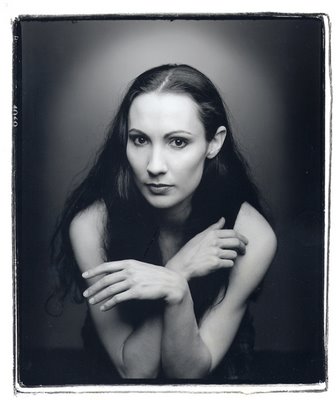
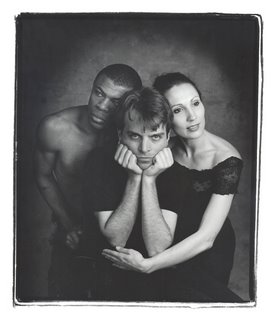
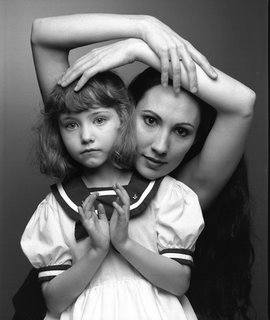
Taking my 8-year-old granddaughter Rebecca to the Saturday matinee performance of Ballet BC's A Streetcar Named Desire was a tough proposition. How do you explain the plot and sexual shenanigans? Luckily there were other things that kept her interest. Before the show I introduced her to percussionist Sal Ferreras, who in his perfect Puerto Rican Spanish, explained that you don't call a vibraphone a vibraharp. Tobin Stokes's score was a pleasure to listen to as was Bill Sample's piano. But for me the unifying symbol of the music was the recurring and beautifully reproduced sound of a passing streetcar complete with an Einsteinian change of pitch as the trolley recedes in distance. Sal Ferreras did this by striking a marine bell and then slowly dunking it into a bucket of water. The other unifying symbol was dancer Simone Orlando who plays Blanche DuBois with such class that you almost forget that she ends up at that house of ill repute, the Flamingo. For years I admired many of the female dancers of Ballet BC. I remember Crystal Pite's elegance, the classic Andrea Hodge, the one-of-a-kind Emily Molnar, the fragile redhead Lori Stallings and recently, the erotic/passionate Sandrine Cassini. I just never really noticed Simone Orlando. Then on February 28, 2004 she came to my studio for photographs. Rebecca was there as my "assistant". We were both charmed but there was something more. I have not been able to take my eyes off Simone whenever she is on stage. A few months later, after a Ballet BC performance I sent Rebecca back stage. It seems that she was invited into Simone's changing room and she emerged with a used pair of Simone's pointe shoes. I believe that Rebecca must have slept with them that night. When we went to congratulate Simone after the performance, we found a barefoot Simone. Rebecca noticed. "Did you see Simone's feet, Papi?" As delicate as Simone is you can see how hard she works at it when you see her feet.
The trio in the photo, from left to right are: Donald Sales (Stanley) Tobin Stokes (the composer of the score) and Simone Orlando (Blanche).
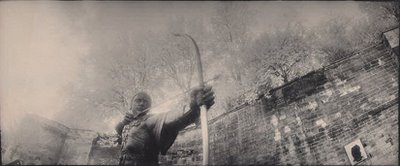
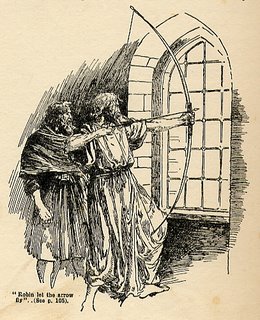
For as long as I can remember I have had Robin Hood and His Life in the Merry Greenwood by Rose Yeatman Woolf and illustrated by Howard Davie. There is an edititing credit to a mysterious Capt. Vrendenburg. There is no publishing date but there is a blue stamp on the opening page that says Mitchell's Book Store - Buenos Aires. I don't know if my father or my mother bought it. But I remember that when I was 7 or 8, my father read me the story. I was touched when Robin says, "It is my last shot,"he sighed. "Lay me where the arrow fell and put my bow beside me." In this version he is with Little John in the end. But I have a particular fondness for the Robin and Marian movie version with Sean Connery and Audrey Hepburn. In it Marian poisons Robin and then herself. But Robin still manages to unleash his last arrow. When I visited Nottingham I was fascinated by all thing Robin including this marvellous statue. Now that Rebecca and I have watched both the Errol Flynn and the Sean Connery, Robin Hood, I will read her the book.
Book
Movie
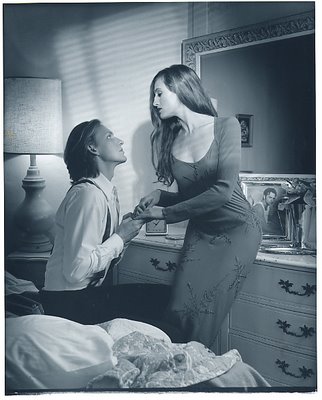
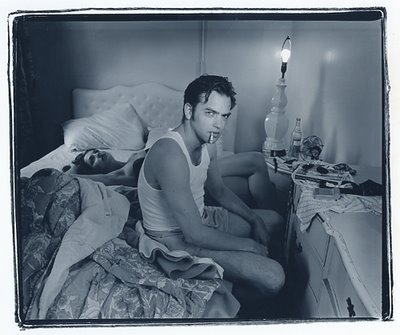
I had not noticed that Books In Canada had ceased publishing. While it did, the best I could say about Quill & Quire was that it was the second driest Canadian magazine. In July, 1994 I was called by Quill & Quire to photograph Vancouver poet, Michael Turner. I took him to my favourite location for sexy, sleezy photographs. This was room 615 of the Marble Arch Hotel on Richards Street. My friend Tony Ricci always made this room available when I needed it. When the picture appeared in the August 1994 issue on the cover (the writer of the piece was a not yet known Zsuzsi Gartner), the publication was showered with instant hate mail. Most readers objected to Salem, in black underwear, lying on the bed behind Turner. The editor called me up to tell me how happy he was. I returned to room 615 in November, 1997 for the Georgia Straight that was one of the few fashion shoots I ever did. This one featured two male Ballet BC dancers who are lured by three female Ballet BC dancers and are quickly dispatched to the other world with a snub nosed .38 revolver. In one of the pictures I decided to place Michael Turner's picture in a frame. Here you see Andrea Hodge and my favourite male Ballet BC dancer ever, Miroslav Zydowicz. I may be tempted to change my mind when I see Donald Sales in Ballet BC's A Streetcar Named Desire this week end.
Ballet BC
Michael Turner
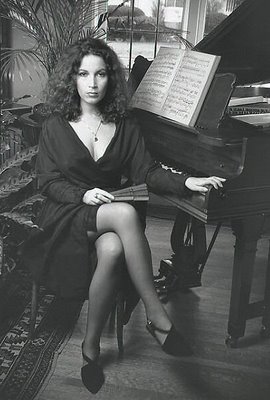
At precisely 11am, every Saturday, Juan Castelao, Rebecca's piano teacher, knocks on the door. At 11:45 we have lunch. The language at the table is Spanish. It is a mixture of Rosemary's Mexican with a Canadian accent, my Argentine and Juan's crisp Oviedan Spanish. After lunch Rebecca and Lauren are read to by Rosemary while Juan and I retire to the living room to listen to music. This last Saturday we listened to Vladimir Horowitz play two Alexander Scriabin Etudes (Etude in C sharp minor, op. 2 no.1 and Etude in D sharp minor, op 8 no. 12). We then compared the performance to Glen Gould playing Scriabin's Piano Sonata no. 3 in F sharp minor, op 23. According to Juan he thought that Gould was the better pianist, particularly in the loud passages where the piano was banged percussively. I think I agreed with Juan, but I was initially swayed by the Russians enthusiastic clapping in Horowitz's live Moscow version. Juan appreciates Gould's penchant for the perfection of a studio recording. I feel lucky to have a friend with whom I can listen to someone like Scriabin and have a discussion. The topic of Scriabin also gives me the marvelous opportunity to place here a photograph of his grand niece, Nicole Scriabin. She is posing by the very piano that Juan teaches Rebecca. It's a Chickering baby grand. Our piano tuner told us that Gould had a Chickering in his living room, too.
Scriabin's Colours
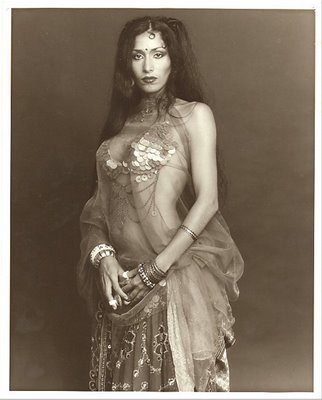
Before restaurant reviewers in Vancouver started trying to imitate A.J. Liebling we had the Vancouver Sun's Alex MacGillivray. He was a meat and potatoes man who was big enough that I don't think he could have ever entered a restaurant incognito. I liked his short, to the point reviews. He sounded very personal because he would start his reviews with, "Your agent sat down and.....I always had the impression the review was just for me. As far as I can tell MacGillivray always wrote about the food and the wines except once. He went to the Kilimanjaro Restaurant, that used to be on Water Street in Gastown, and never mentioned the food. He wrote enthusiastically about Sarita the belly dancer. I suspect that A. J. Liebling might have skipped dinner, too.
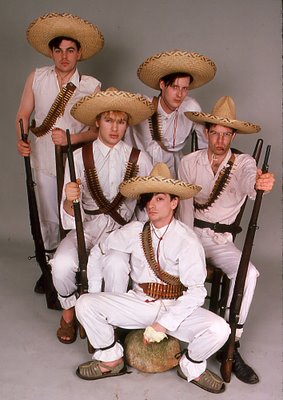
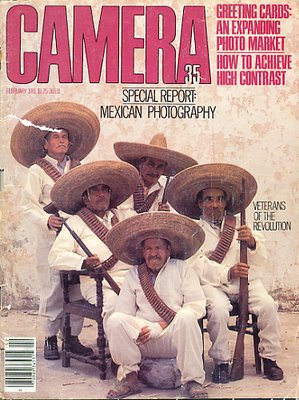
It was inevitable that I would publish a photograph of Vancouver guitar legend/virtuoso Art Bergmann in this blog. Thanks to a scanner I can show the story behind it. I started taking pictures of Art in the late 70s and stopped in the mid 90s. When I took this picture in April 1981 many Vancouver punk bands formed ancillary bands in which the guitar player of one band would play as a drummer in another and so on. They played for "the fuck of it" so they were known as fuck bands. Los Popularos ( began its days in 1980 as Los Rádicos Popularos) was a fuck band that became a super group. Bill Shirt was the lead singer but many of us went to Pops concerts not only to hear Art Bergmann's brilliant lead guitar (Buck Cherry's rhythm guitar was dynamite, too), but also in the hope of hearing a bit of that inimitable Bergmann voice/rasp. In one of the songs Art would scream (to our delight), "It was the sex, it was the sex!" In February 81, I bought a copy of my favourite camera magazine of the day, Camera 35. In April I had to photograph Los Popularos for Les Wiseman's In One Ear column in Vancouver Magazine. There was no doubt in my mind what I was going to do. From gun collector Tom Bongalis, I obtained three antique rifles and the bandoleers. I needed a fourth rifle, so writer Ben Metcalfe lent me his Winchester repeater. The white pants and shirts were courtesy of BJ's, a 70s and 80s underground drag queen club on West Pender, very near the Niagara Hotel. The bandido hats I rented at Watts Costumes on West 6th Avenue. I asked the band to come to my Burnaby home studio. Tony Bardach and Art Bergmann called me from the Boundary Loop so I picked them up in my two-seater Fiat. When Tony sat on Art's lap, Art slammed the door on Tony's hand. I did not notice that Tony's hand was bleeding until I began to take my photos. We bandaged it up.
Tony Bardach (centre), base, Zippy Pinhead (middle, left),drums, Art Bergmann (middle right), lead guitar, John Armstrong, aka Buck Cherry (top, left), rhythm guitar, Bill Shirt (top right), lead singer.
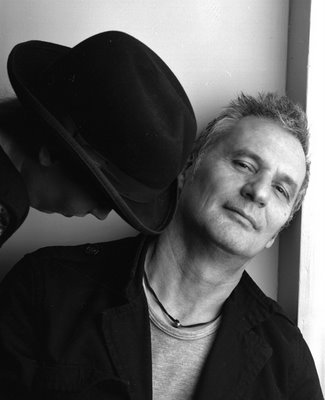
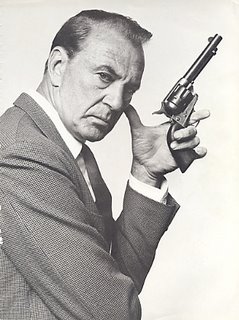
In the early 50s, US photographer Bert Stern convinced the folks at Smirnoff Vodka that the driest vodka martini would have to evoke the dryness of a real desert. So Bert Stern went to Egypt and took the famous photo of the martini with the Great Pyramid of Giza as a background. Stern initiated the trend of photographers going around the world with big budgets all in the name of authenticity. That era and the budgets are long gone but I always have in mind Stern's ability to distill any portrait into an essence. When he was assigned to photograph Gary Cooper in the role of Western hero in the heels of his staring part in High Noon, Stern chose to photograph him in a coat and tie and used the gun as the essence to convey the idea of the Western. In this portrait Stern shows what so few photographers are able to do well and this is the perfect white background. Whenever I take portraits I invariably put myself in Stern's shoes. Here is my take on Morris Panych the director of the Arts Club Theater production of Samuel Becket's Waiting for Godot.
Bert Stern
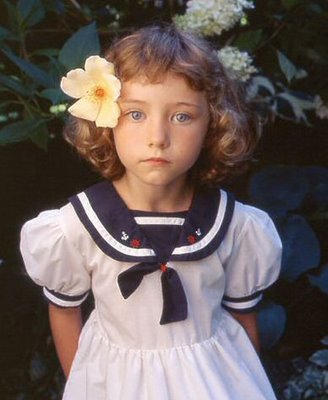

I do believe that all children, be they little boys or little girls, should have and wear a sailor dress or suit at least once in their life. I was delighted when on a trip to Can Cun in 2002, I found a sailor dress at a Sanborns drug store. In May 2003, when Rebecca was 5, she wore it in our garden and posed for me with Rosa 'Mrs. Oakley Fisher'. In 1966 I wore a real sailor uniform and here it was in my winter blues by the sea lion on the rambla at Mar del Plata in Argentina. I originally left Buenos Aires in 1954 when I was 11 and I have fond memories of going to the movies with my father and mother and particularly with my grandmother, Lolita. She had a liking for "peliculas de con-boy" and she would take me to Lavalle Street which had blocks and blocks of movie houses, one after the other. It was not unusual to see three westerns in a row. I specially remember Colt 45 with Randolph Scott in glorious Technicolor. She had good taste for war movies as she took me to see Battleground with John Hodiak. But my mother and father were the ones that took me to the movies that have lingered in my memory. Beau Geste with Gary Cooper, Robin Hood with Errol Flynn, The Corsican Brothers with Douglas Fairbanks Jr, Scaramouche with Stewart Granger, The Man in the Iron Mask with Louis Hayward and The Scarlet Pimpernel with my mother's favourite actor (after Joseph Cotton) Leslie Howard. I saw them again with my daughters, particularly with Rebecca's mother, Hilary. Hilary and I saw Gunga Din when Hilary was 8. Today Rebecca (8) and I saw Gunga Din . I told Rebecca, after the movie ended, that as a boy all I wanted to see were peliculas de guerra (war), de conboys, de piratas and de espadachines (swordfighting movies). I further told her that I could not speak for the tastes of a little girl since I had never been one. Her reply was, "Papi, as a little girl my tastes aren't that different." Imagine that!
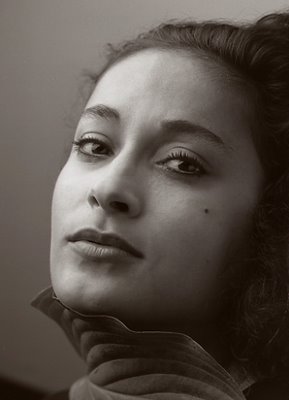
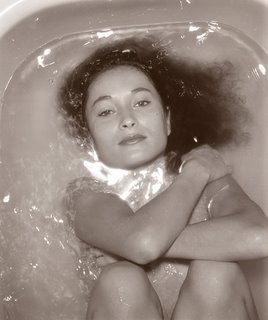
Any excuse to publish the photograph of a beautiful woman is a good one. But this time around the reason is a sad one. It was only yesterday that I found out that Maria de Lurdes Béjar had died. I don't know more because I was too shocked to ask her ex-husband, globetrotting photographer León Béjar, any more questions. I photographed Lurdes twice: once in my studio and another time in her tub as part of my 1989 show of women in tubs. Lurdes was from Portugal. She was not a inch taller than 5 feet. She was one of the most beautiful women I ever met.




In my old Catholic missal I remember distinctly that every Sunday mass and feast day had a category of importance or ranking. The most important Sunday and or feast day of the year is not Christmas but Easter. Brother Edwin Reggio, my religion teacher at St. Edward's High School in Austin, Texas explained why. If after the crucifixion, Jesus did not rise from the dead, then everything He preached was a lie. The other and now almost forgotten, but very important feast, is January 6th's Epiphany. Until the advent of the New Testament only circumcised Jews (the chosen people who had made a compact with God) could be saved. The three wise kings represented the gentiles (uncircumcised heathens!) who now could be part of the fold. One day, trying to waste time in class, we asked Brother Edwin why it was that Easter had a bunny. Since we were in Texas we understood his explanation that the hare or rabbit at night will pop up here and then disappear and pop up somewhere else. This was very much the case of Jesus after Easter. He would appear here and there but not long enough for "doubting" St Thomas to believe as true.
Today I photographed a group of Vancouver artists including Attila Richard Lukacs who asked Rebecca if she looked forward to the coming of the Easter Bunny. Rebecca (8½) replied, "The Easter Bunny does not exist."
Sábado De Gloria
Saturday, April 15, 2006

Holy Saturday is called sábado de gloria in Spanish. I have never known why this day, in which nothing really happens is called a Saturday of glory. It seems like today is a day of transition in which me meditate on a death without knowing for certain if a resurrection will follow.
When I asked Lauri Stallings to hover near composer Owen Underhill in 1997 in preparation for Ballet BC's production of Boy Wonder I felt great comfort and peace.
Quietly Communist
Friday, April 14, 2006


My first job in Vancouver, 30 years ago, was at Tilden Rent-A-Car on Alberni Street, across from the Ritz Hotel (If you have to ask, you are too young). I was told not to rent cars to anybody surnamed John or George. I did not understand. Finally the manager said, "Don't rent to Indians." I decided to rent a car, no questions asked, to the first "Indian" that walked through the door. That Indian was a very large and rough looking man called Moving Rock. I rented him (he did not have a driver's license) an Oldsmobile station wagon. For reference Moving Rock gave me Alderman Harry Rankin. Most of us were in awe of Rankin. I called and Rankin told me I was not going to have any problems with Moving Rock. A month later the abandoned station wagon was found in Arizona. I was almost fired. Furthermore I was not to rent to any more rocks, Indians or a Johnny Stone. Stone, who was a good renter of mine, was a black pimp from Seattle. He rented modest Vegas and always returned them spotless and on time.
In September 1987 Alderman Rankin was running for mayor against Gordon Campbell. Equity Magazine's editor, Harvey Southam thought Campbell the better man to keep the status quo so he hired right-wing columnist and writer Doug Collins to write a profile. I was dispatched with the instructions to use my green filter, b+w technique on Rankin. I told Rankin that the green filter was going to make him look older. His retort, "Go ahead shoot, I don't give a f...." When the magazine appeared in October I was amazed to see my two page spread with the huge banner, Quietly Communist on top.
Nitobe Memorial Garden at UBC
Thursday, April 13, 2006


When I first came to Vancouver 30 years ago I had seen perhaps 10 real live Japanese people in my life. They had been my 10 students, from the Japanese company Mitsui, that I had taught Spanish to in Mexico City. I was fascinated by all things Japanese. Japanese is pronounced exactly like Spanish as they have only five vowel sounds. I could proudly read what was on the lenses of my cameras - Asahi Pentax - Nippon Kogaku (the original Nikon lenses had this).
Sometimes you have to be a newcomer or a tourist to a city to discover its treasures. One of Vancouver's is the Nitobe Memorial Garden at UBC. It is part of the UBC Botanical Garden. But let's be exact. That's UBC Botanical Garden and Centre of Plant Research. A real botanical garden does reasearch and exchanges information with other botanical gardens worldwide. VanDusen, for example is display garden as it does not do research. Some years ago Saturday Night assigned me to photograph Nitobe Garden. The author of the piece was/is my friend David Morton. While I considered myself a competent portait photographer I was an innocent with gardens. It took me a while to figure out (only after I peeked at Japanese garden spreads in Japanese camera magazines) that Japanese gardens are best photographed on cloudy days. I learned then what I now try to teach my students at Focal Point. The big enemy of photography is contrast. I would define photography as the control of contrast. To get all those shades of green at Nitobe you need to wait (not long in Vancouver) for a cloudy day. You also try to use film with the least amount of contrast. This is usually professional colour slide film or good old wedding photography colour negative. Digital cameras have to have their contrast levels dialed down.
And why is Nitobe Garden a treasure? The water and those greens are most soothing. The garden is also quiet. One of my favourite games is to pick one of the koy and to follow it around as it meanders in the pond.
Nitobe
UBC Botanical Garden And The Russian Connection
Wednesday, April 12, 2006


My Horizont swivel lens panoramic camera was made in the Soviet Union in the 60s. It is highly unpredictable and unreliable but it has a sharp lens. The lens swivels a 150 degree sweep which I think mimics human vision (albeit with a sharper peripheral view). When I load it with Kodak b+w infrared film the results are even more unreliable and unpredictable. But when things go well you get this. The curious split toning colour is caused by selenium toner working on the now (alas!) discontinued Agfa Portriga. On a sunny day the view (on the right) at the end of the boardwalk at the UBC Botanical Garden is one of the most beautiful sights I have ever seen.
UBC Botanical Garden
Sex Crimes, Homicide and Drugs
Tuesday, April 11, 2006


Manrique was a plainclothes cop. My father, who was a journalist for the Buenos Aires Herald, used to bring him to the house. I was so curious in trying to spy the gun he wore under his coat that I never found out if Manrique was his first or last name nor why he visited my father. In one visit Manrique gave me a cheap Thor copy of Edmundo de Amicis's Corazón which I have read many times and still have. I can say I have had a special interest in cops since. In Mexico I was afraid of cops and I bribed many while there. It has been a relief in my 30 years in Vancouver to have never felt that dread I had in Mexico when I was stopped by a cop. One cop, in particular I came to like, lots. I photographed Constable Steven Pranzl (above, right) for the cover of Vancouver Magazine in June 1986. We all laughed at how our makeup artist overdid it and many in the Vancouver Police Department thought Pranzl looked like a queen. At the time he was in sex crimes. Through the years I have kept in touch with this stylish and urbane man. The last time I had some Earl Gray tea with him, he was wearing a camel hair coat from Holt Renfrew, an immaculate black turtle neck, beautiful slacks with a sharp crease and burgundy tassel shoes. "I am in homicide now," and producing a pepper spray can, "and this is my gun."
I met Gil Puder (above,left) in June 1999. We had coffee at the Ovaltine Cafe on West Hastings. I had been hired by Douglas & McIntyre to photograph him for his forthcoming personal expose on the drug situation in Vancouver as seen by a cop on the beat. The book was to be called Crossfire. We decided not to photograph him in a back alley but in my studio. For personal reasons (or reasons he was not willing to reveal to me) he could not pose in a Vancouver Police uniform. He confessed to me that he had an unusual mid life crisis problem. Or at least it was his wife's as she had left him and puchased a Miata at the same time. After taking the photographs, a couple of months later I had to photograph an actor in a back alley who was making a movie. I asked one of the motorcycle cops there if he knew Puder. His exact answer (to the effect that the sooner Puder was dead the better) I cannot print here. A few months later I read of his death in the Vancouver Sun. Perhaps I am a bit paranoid in having noticed that a writer at the publisher told me Puder had died of an ailment that was not the one mentioned in the Sun. Shortly after, I was paid for the photos and the book project was cancelled. The unofficial explanation that I was given was that with the author dead nobody was keen on taking the chance of dealing with a lawsuit by what may have been the explosive content of his book.
Addendum 1. - October 7, 2007
name: Christine Puder
comments: Hi Alex,
I was looking for a photographer and came across your information as
I searched. I am the widow of Gil Puder. I was somewhat dismayed
at the information posted about Gil on your site. Some of the
information is not true and is damaging for myself and my sons. I
would be glad to help it appear accurately if you choose to have it up
for everyone to see. It is personally upsetting as I did not leave Gil, nor buy a sportscar. His death was from melanoma and my sons and I spend all our time
with Gil during his final days at the hospital.
Thank you for your consideration,
Sincerely,
Christine Puder
Addendum 2
I could have not heard correctly what Mr. Puder told me in my studio during the photo session. Or perhaps if I heard correctly, his disease prevented him from expressing himself correctly. I am deeply sorry that I may have offended unknowingly (when I wrote the above) her and her children. But I would never consider either tearing out or correcting a page from my diary. On the other hand Christine Puder was gracious enough not to point out that I had incorreclty spelled her husband's first and last name in my above blog. I have corrected that.
An Estonian, The Change Ringer & St Martin In The Fields
Monday, April 10, 2006



Some years ago while in London, I decided to go and see a Graham Greene play, Travels With My Aunt. At the intermission I was savouring the feeling of not running into anybody I knew or had photographed. That was not to be. The mysterious and handsome Laith Reynolds (I once asked him if he were a spy and he smiled without answering), stood in front of me producing a hand with a spotless white, cotton glove. "I have a skin, condition, you know." He offered to pick me up very early in the morning at my hotel to take me to listen to him change ring at St Martin in the Fields and at St Clement Danes. People go to St Clement Danes to see the statue of Sir Arthur "Bomber" Harris that is outside. That evening Laith drove me (he owns a Jaguar in every city that he lives in) to his house for a drink and to meet his wife. His house was on one of those famously circular streets with very expensive and old houses. Change ringing is an English art that has a worldwide following and whose members communicate in patterns that to me seem to be almost masonic. After listening to Laith (the man on the right with the white shirt and tie) and the other folks ring the bells in patterns that only the learned can discern, we walked down the spiral staircase of the bell tower. We finished the day looking at the Templar tombs in the Temple Church. My 50mm F-1.4 Nikon lens fell out of my bag and rolled all the way down before I could catch it. For the last ten years I have taken pictures with a cracked rear element. I regret to this day turning down (I said I didn't have the time) Laith's offer to take me to ring the bells at St Paul's Cathedral the next day.
Maanus Pikker, an Estonian engineer I met at Wreck Beach (fourth from the right), says I snapped this with his camera. After not seeing him for 27 years he contacted me and we had tea at the Granville Island Tea Company. He offered me the gift of a pristine Nikon FM (sort of like opening a barn door in the sticks and finding a brand new Wolkswagen Beetle). The camera came with a 50mm F-1.4 NIkon lens in mint condition.
Laith Reynolds
St Martin in the Fields
Einstein And A Streetcar Named Desire
Sunday, April 09, 2006



Taking my 8-year-old granddaughter Rebecca to the Saturday matinee performance of Ballet BC's A Streetcar Named Desire was a tough proposition. How do you explain the plot and sexual shenanigans? Luckily there were other things that kept her interest. Before the show I introduced her to percussionist Sal Ferreras, who in his perfect Puerto Rican Spanish, explained that you don't call a vibraphone a vibraharp. Tobin Stokes's score was a pleasure to listen to as was Bill Sample's piano. But for me the unifying symbol of the music was the recurring and beautifully reproduced sound of a passing streetcar complete with an Einsteinian change of pitch as the trolley recedes in distance. Sal Ferreras did this by striking a marine bell and then slowly dunking it into a bucket of water. The other unifying symbol was dancer Simone Orlando who plays Blanche DuBois with such class that you almost forget that she ends up at that house of ill repute, the Flamingo. For years I admired many of the female dancers of Ballet BC. I remember Crystal Pite's elegance, the classic Andrea Hodge, the one-of-a-kind Emily Molnar, the fragile redhead Lori Stallings and recently, the erotic/passionate Sandrine Cassini. I just never really noticed Simone Orlando. Then on February 28, 2004 she came to my studio for photographs. Rebecca was there as my "assistant". We were both charmed but there was something more. I have not been able to take my eyes off Simone whenever she is on stage. A few months later, after a Ballet BC performance I sent Rebecca back stage. It seems that she was invited into Simone's changing room and she emerged with a used pair of Simone's pointe shoes. I believe that Rebecca must have slept with them that night. When we went to congratulate Simone after the performance, we found a barefoot Simone. Rebecca noticed. "Did you see Simone's feet, Papi?" As delicate as Simone is you can see how hard she works at it when you see her feet.
The trio in the photo, from left to right are: Donald Sales (Stanley) Tobin Stokes (the composer of the score) and Simone Orlando (Blanche).
Robin Hood Of Nottingham
Saturday, April 08, 2006


For as long as I can remember I have had Robin Hood and His Life in the Merry Greenwood by Rose Yeatman Woolf and illustrated by Howard Davie. There is an edititing credit to a mysterious Capt. Vrendenburg. There is no publishing date but there is a blue stamp on the opening page that says Mitchell's Book Store - Buenos Aires. I don't know if my father or my mother bought it. But I remember that when I was 7 or 8, my father read me the story. I was touched when Robin says, "It is my last shot,"he sighed. "Lay me where the arrow fell and put my bow beside me." In this version he is with Little John in the end. But I have a particular fondness for the Robin and Marian movie version with Sean Connery and Audrey Hepburn. In it Marian poisons Robin and then herself. But Robin still manages to unleash his last arrow. When I visited Nottingham I was fascinated by all thing Robin including this marvellous statue. Now that Rebecca and I have watched both the Errol Flynn and the Sean Connery, Robin Hood, I will read her the book.
Book
Movie
Quill & Quire - Desire And Murder At The Marble Arch
Friday, April 07, 2006


I had not noticed that Books In Canada had ceased publishing. While it did, the best I could say about Quill & Quire was that it was the second driest Canadian magazine. In July, 1994 I was called by Quill & Quire to photograph Vancouver poet, Michael Turner. I took him to my favourite location for sexy, sleezy photographs. This was room 615 of the Marble Arch Hotel on Richards Street. My friend Tony Ricci always made this room available when I needed it. When the picture appeared in the August 1994 issue on the cover (the writer of the piece was a not yet known Zsuzsi Gartner), the publication was showered with instant hate mail. Most readers objected to Salem, in black underwear, lying on the bed behind Turner. The editor called me up to tell me how happy he was. I returned to room 615 in November, 1997 for the Georgia Straight that was one of the few fashion shoots I ever did. This one featured two male Ballet BC dancers who are lured by three female Ballet BC dancers and are quickly dispatched to the other world with a snub nosed .38 revolver. In one of the pictures I decided to place Michael Turner's picture in a frame. Here you see Andrea Hodge and my favourite male Ballet BC dancer ever, Miroslav Zydowicz. I may be tempted to change my mind when I see Donald Sales in Ballet BC's A Streetcar Named Desire this week end.
Ballet BC
Michael Turner
Alexander Scriabin's Grand Niece Nicole
Thursday, April 06, 2006

At precisely 11am, every Saturday, Juan Castelao, Rebecca's piano teacher, knocks on the door. At 11:45 we have lunch. The language at the table is Spanish. It is a mixture of Rosemary's Mexican with a Canadian accent, my Argentine and Juan's crisp Oviedan Spanish. After lunch Rebecca and Lauren are read to by Rosemary while Juan and I retire to the living room to listen to music. This last Saturday we listened to Vladimir Horowitz play two Alexander Scriabin Etudes (Etude in C sharp minor, op. 2 no.1 and Etude in D sharp minor, op 8 no. 12). We then compared the performance to Glen Gould playing Scriabin's Piano Sonata no. 3 in F sharp minor, op 23. According to Juan he thought that Gould was the better pianist, particularly in the loud passages where the piano was banged percussively. I think I agreed with Juan, but I was initially swayed by the Russians enthusiastic clapping in Horowitz's live Moscow version. Juan appreciates Gould's penchant for the perfection of a studio recording. I feel lucky to have a friend with whom I can listen to someone like Scriabin and have a discussion. The topic of Scriabin also gives me the marvelous opportunity to place here a photograph of his grand niece, Nicole Scriabin. She is posing by the very piano that Juan teaches Rebecca. It's a Chickering baby grand. Our piano tuner told us that Gould had a Chickering in his living room, too.
Scriabin's Colours
Alex MacGillivray And The Belly Dancer
Wednesday, April 05, 2006

Before restaurant reviewers in Vancouver started trying to imitate A.J. Liebling we had the Vancouver Sun's Alex MacGillivray. He was a meat and potatoes man who was big enough that I don't think he could have ever entered a restaurant incognito. I liked his short, to the point reviews. He sounded very personal because he would start his reviews with, "Your agent sat down and.....I always had the impression the review was just for me. As far as I can tell MacGillivray always wrote about the food and the wines except once. He went to the Kilimanjaro Restaurant, that used to be on Water Street in Gastown, and never mentioned the food. He wrote enthusiastically about Sarita the belly dancer. I suspect that A. J. Liebling might have skipped dinner, too.
Art Bergmann and Los Rádicos Popularos
Tuesday, April 04, 2006


It was inevitable that I would publish a photograph of Vancouver guitar legend/virtuoso Art Bergmann in this blog. Thanks to a scanner I can show the story behind it. I started taking pictures of Art in the late 70s and stopped in the mid 90s. When I took this picture in April 1981 many Vancouver punk bands formed ancillary bands in which the guitar player of one band would play as a drummer in another and so on. They played for "the fuck of it" so they were known as fuck bands. Los Popularos ( began its days in 1980 as Los Rádicos Popularos) was a fuck band that became a super group. Bill Shirt was the lead singer but many of us went to Pops concerts not only to hear Art Bergmann's brilliant lead guitar (Buck Cherry's rhythm guitar was dynamite, too), but also in the hope of hearing a bit of that inimitable Bergmann voice/rasp. In one of the songs Art would scream (to our delight), "It was the sex, it was the sex!" In February 81, I bought a copy of my favourite camera magazine of the day, Camera 35. In April I had to photograph Los Popularos for Les Wiseman's In One Ear column in Vancouver Magazine. There was no doubt in my mind what I was going to do. From gun collector Tom Bongalis, I obtained three antique rifles and the bandoleers. I needed a fourth rifle, so writer Ben Metcalfe lent me his Winchester repeater. The white pants and shirts were courtesy of BJ's, a 70s and 80s underground drag queen club on West Pender, very near the Niagara Hotel. The bandido hats I rented at Watts Costumes on West 6th Avenue. I asked the band to come to my Burnaby home studio. Tony Bardach and Art Bergmann called me from the Boundary Loop so I picked them up in my two-seater Fiat. When Tony sat on Art's lap, Art slammed the door on Tony's hand. I did not notice that Tony's hand was bleeding until I began to take my photos. We bandaged it up.
Tony Bardach (centre), base, Zippy Pinhead (middle, left),drums, Art Bergmann (middle right), lead guitar, John Armstrong, aka Buck Cherry (top, left), rhythm guitar, Bill Shirt (top right), lead singer.
Morris Panych And Bert Stern's Gary Cooper
Monday, April 03, 2006


In the early 50s, US photographer Bert Stern convinced the folks at Smirnoff Vodka that the driest vodka martini would have to evoke the dryness of a real desert. So Bert Stern went to Egypt and took the famous photo of the martini with the Great Pyramid of Giza as a background. Stern initiated the trend of photographers going around the world with big budgets all in the name of authenticity. That era and the budgets are long gone but I always have in mind Stern's ability to distill any portrait into an essence. When he was assigned to photograph Gary Cooper in the role of Western hero in the heels of his staring part in High Noon, Stern chose to photograph him in a coat and tie and used the gun as the essence to convey the idea of the Western. In this portrait Stern shows what so few photographers are able to do well and this is the perfect white background. Whenever I take portraits I invariably put myself in Stern's shoes. Here is my take on Morris Panych the director of the Arts Club Theater production of Samuel Becket's Waiting for Godot.
Bert Stern
Gunga Din, The Sailor Dress & The Sailor
Sunday, April 02, 2006


I do believe that all children, be they little boys or little girls, should have and wear a sailor dress or suit at least once in their life. I was delighted when on a trip to Can Cun in 2002, I found a sailor dress at a Sanborns drug store. In May 2003, when Rebecca was 5, she wore it in our garden and posed for me with Rosa 'Mrs. Oakley Fisher'. In 1966 I wore a real sailor uniform and here it was in my winter blues by the sea lion on the rambla at Mar del Plata in Argentina. I originally left Buenos Aires in 1954 when I was 11 and I have fond memories of going to the movies with my father and mother and particularly with my grandmother, Lolita. She had a liking for "peliculas de con-boy" and she would take me to Lavalle Street which had blocks and blocks of movie houses, one after the other. It was not unusual to see three westerns in a row. I specially remember Colt 45 with Randolph Scott in glorious Technicolor. She had good taste for war movies as she took me to see Battleground with John Hodiak. But my mother and father were the ones that took me to the movies that have lingered in my memory. Beau Geste with Gary Cooper, Robin Hood with Errol Flynn, The Corsican Brothers with Douglas Fairbanks Jr, Scaramouche with Stewart Granger, The Man in the Iron Mask with Louis Hayward and The Scarlet Pimpernel with my mother's favourite actor (after Joseph Cotton) Leslie Howard. I saw them again with my daughters, particularly with Rebecca's mother, Hilary. Hilary and I saw Gunga Din when Hilary was 8. Today Rebecca (8) and I saw Gunga Din . I told Rebecca, after the movie ended, that as a boy all I wanted to see were peliculas de guerra (war), de conboys, de piratas and de espadachines (swordfighting movies). I further told her that I could not speak for the tastes of a little girl since I had never been one. Her reply was, "Papi, as a little girl my tastes aren't that different." Imagine that!
María de Lurdes Béjar
Saturday, April 01, 2006


Any excuse to publish the photograph of a beautiful woman is a good one. But this time around the reason is a sad one. It was only yesterday that I found out that Maria de Lurdes Béjar had died. I don't know more because I was too shocked to ask her ex-husband, globetrotting photographer León Béjar, any more questions. I photographed Lurdes twice: once in my studio and another time in her tub as part of my 1989 show of women in tubs. Lurdes was from Portugal. She was not a inch taller than 5 feet. She was one of the most beautiful women I ever met.






